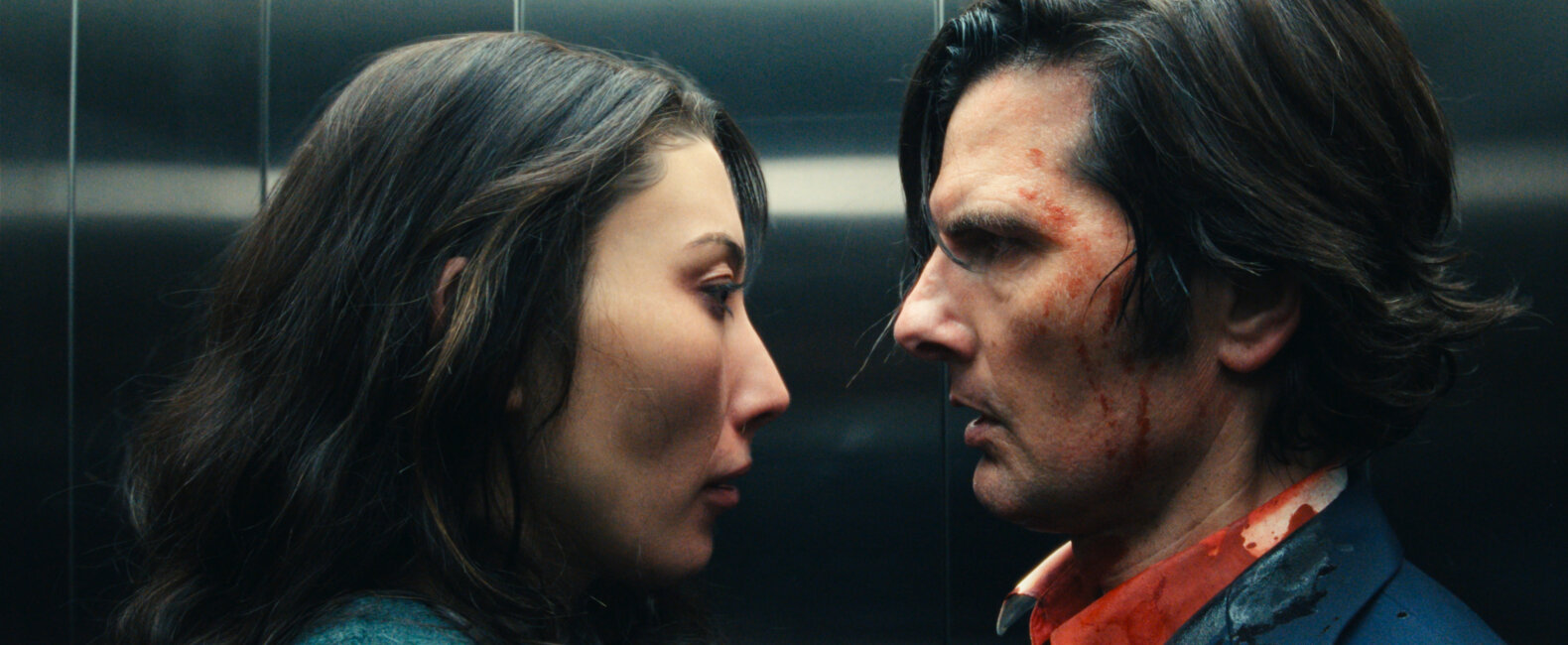Severance isn’t just one of the most visually distinct shows on TV—it’s a masterclass in editing as storytelling.
As editor Geoffrey Richman puts it:
“Editing is the final draft of the script.”
That hits home for any editor who’s had to rebuild a scene in the timeline after the written version just didn’t land. What makes Severance stand out isn’t only the brutalist set design or eerie performances—it’s the way every edit is designed to guide emotional perception. From the camera coverage to the rhythm of a cut to the way scenes speak to one another, Severance is edited not just with style, but with story-first intention.
RELATED READS: Nic Larrabure on Crafting Emotional Stories Through Intentional Editing
We watched Apple’s “Behind the Mac: Editing Severance” and learned some really great stuff. We broke it down and found 5 lessons the editing in Severance teaches us about how to cut with meaning.
**SPOILER WARNING**

1. Let the Scene Breathe
In one of the season’s standout sequences—the marching band performance—Richman intentionally leaned into claustrophobic coverage. The result? A scene that feels as emotionally tight as it is visually packed.
“By being more claustrophobic in that moment, it creates more of that visceral feeling… that they’re swallowed up.”
Using long lenses, foreground clutter, and vérité-style camera movement, the sequence resists the urge to cut fast. Instead, it sits in the discomfort. It traps us alongside the characters, subtly building tension through composition and pacing rather than action or exposition.
RELATED READS: Follow the Edit: Key Insights on Letting Your Project Lead the Way

2. Cut for Association, Not Just Continuity
One of Severance’s strongest editorial tools is its ability to create emotional associations between unrelated scenes. Editing isn’t just about linear logic—it’s about emotional logic. A prime example?
In one episode, a chilling line—“Give me its life”—is followed by a quiet shot of the crib. There’s no explicit explanation. But the meaning is clear: Gemma is in danger. And we feel it.
“The edit process is about finding these associations… infusing ideas from one scene into the next.”
By cutting for suggestion, not explanation, the editors keep the audience engaged on a deeper level. It’s not about handing them answers. It’s about inviting them to connect the emotional dots.

3. The Kuleshov Effect: A Psychological Superpower
That crib moment is also a perfect example of a foundational editing principle: the Kuleshov Effect.
Lev Kuleshov, a Soviet filmmaker, demonstrated that the meaning of a shot changes depending on what comes before or after it. Show a neutral face, then cut to a child, and we assume affection. Cut the same face to a coffin, and we read grief.
Severance weaponizes this idea. When “Give me its life” precedes a shot of Gemma in the crib, we instantly feel that threat—even though the characters are in different rooms, in separate storylines. The edit creates tension not through action, but through implication.
That’s emotional storytelling through sequencing—and it’s a technique editors can use in any genre.

4. Allow Emotion to Lead the Rhythm
In the climax of the season, composer Theodore Shapiro and the editorial team explored multiple music cues for the same scene—one tense, one emotional. The difference? Everything.
“It had a better pattern to it to have the emotional music on the testing floor… because it’s Mark and Gemma.”
Choosing the emotional cue reshaped the scene’s pacing and tone, allowing it to breathe and connect. The rhythm of the cut became less about propulsion and more about resonance—about lingering in the right moments and letting the weight of the story land.
When every cut is aligned with the emotional arc, the edit becomes invisible—but deeply felt.

5. Create an Ending That Echoes
Even the final moments of the season are driven by editorial intention. Mark and Gemma escape, hand in hand—romantic, desperate, euphoric. There was discussion about ending the scene earlier. But holding the shot just long enough shifts it from a typical cliffhanger to something richer.
It becomes a paradox: beautiful and horrifying all at once. And that contradiction lingers in the mind, long after the screen fades to black.
RELATED READS: 10 Award-Winning Editors Share Key Components of the Craft
For Editors Who Craft With Purpose
What Severance reminds us is that powerful editing isn’t about fancy cuts or flashy transitions. It’s about intentionality. Every cut should have a reason. Every sequence should shape how we feel.
At Filmsupply, we exist to support that final draft. Every clip in our library comes from real productions—short films, spec ads, and passion projects by filmmakers who care about craft. It’s story-first footage, curated for editors who want every frame to mean something.
From vérité handheld sequences to symmetrical slow burns, Filmsupply’s cinematic collections help you build scenes with emotional precision—not just fill gaps.
If you’re editing a story that needs to feel like Severance—tight, tense, deeply human—we’ve got what you need.
Explore our collections or start your search.






